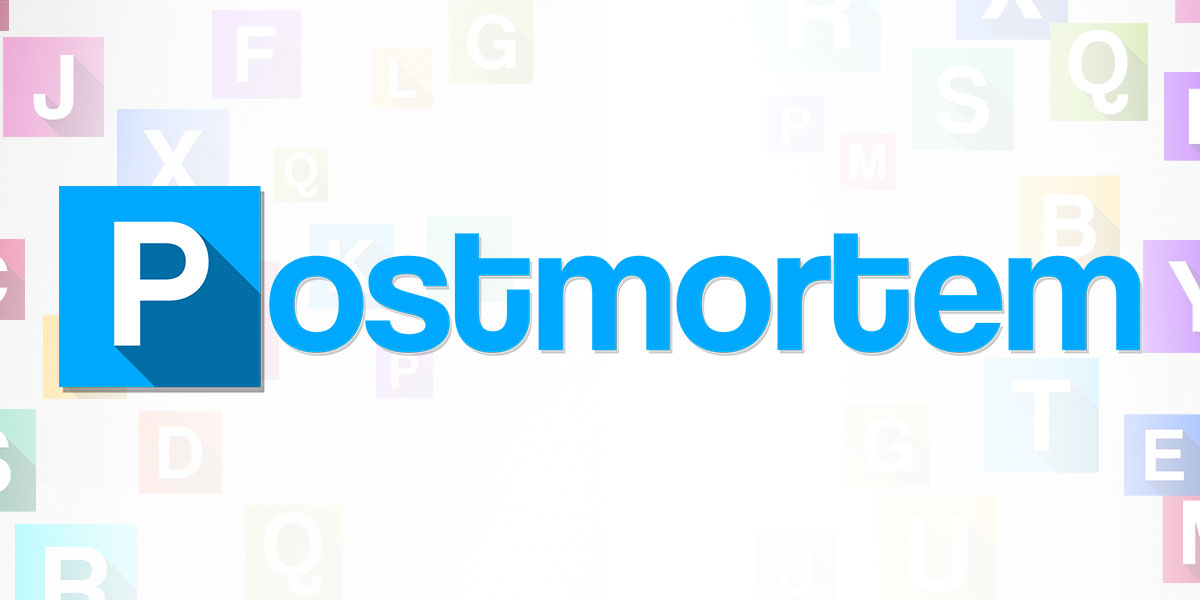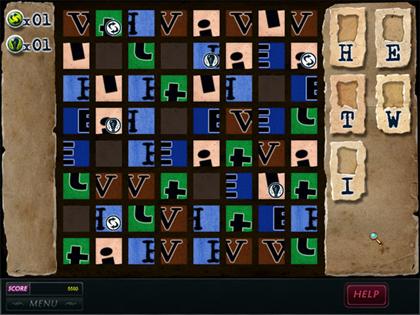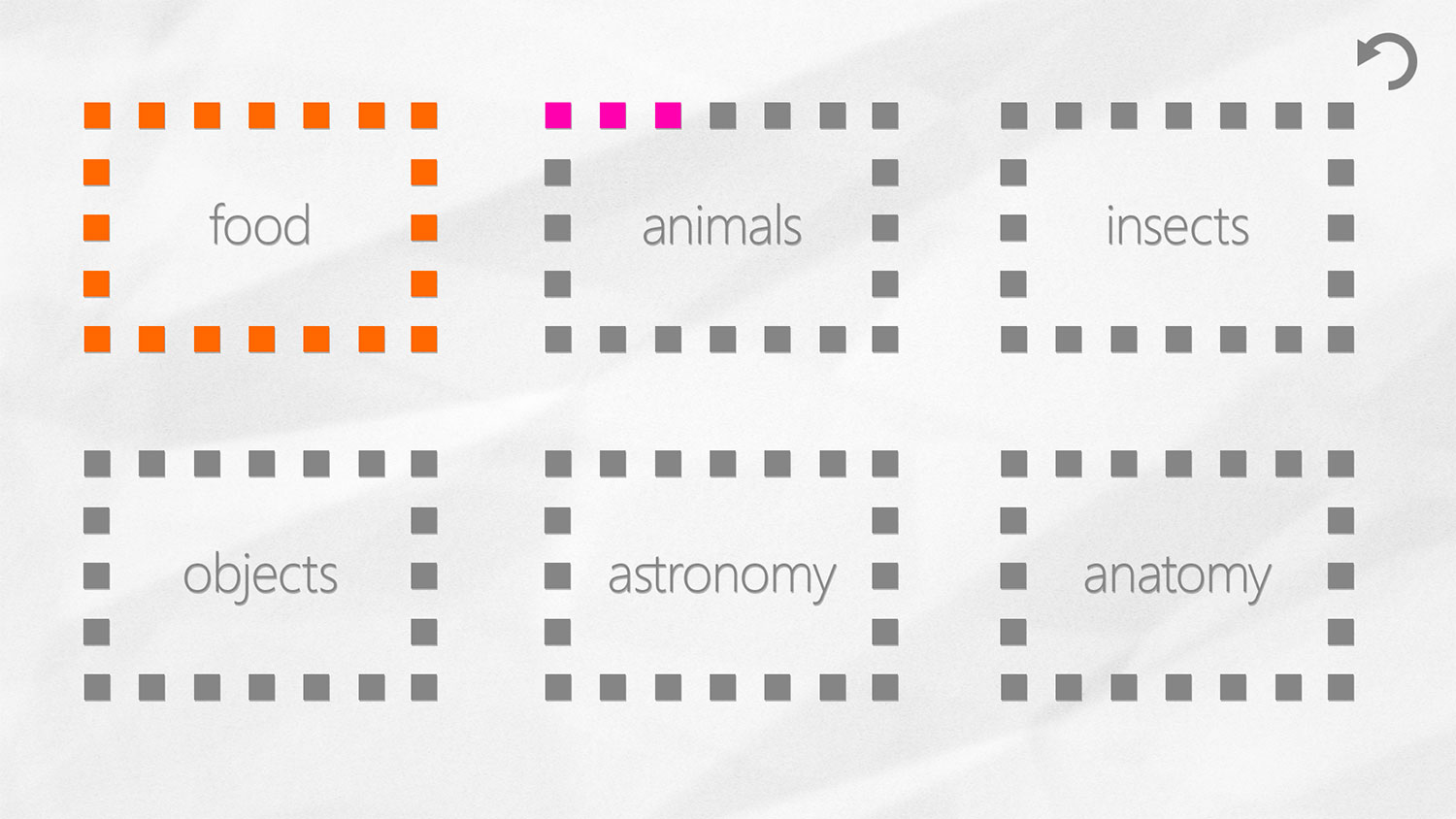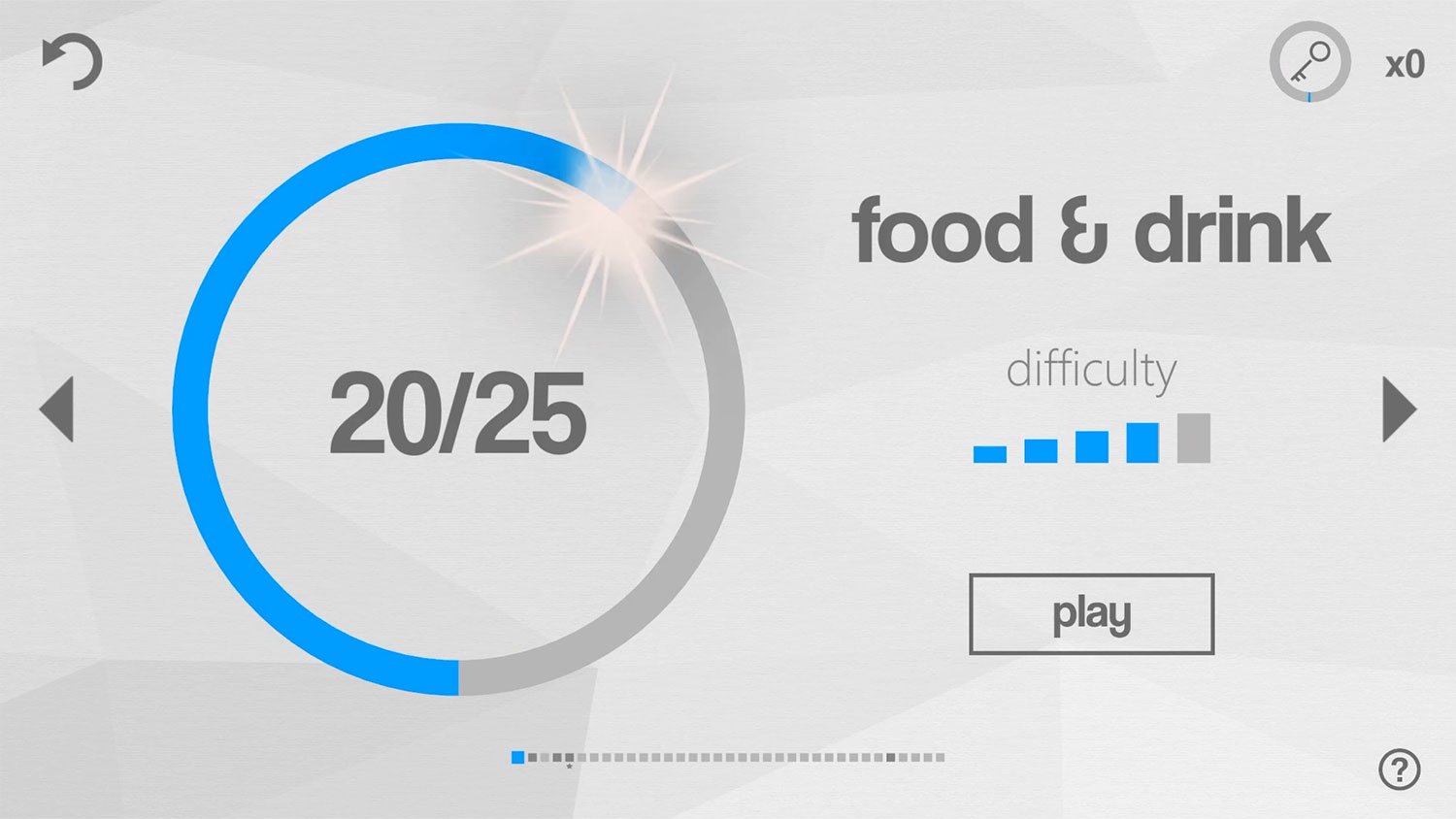blog

anagrams postmortem
July 12, 2023
- anagrams
- postmortem
Here lies a postmortem about our first game: Anagrams. What started as “just a little puzzle game” turned into a 4-year-long project that tested us every step of the way.
The 1st Idea
Though we had dabbled with game jams and little prototypes in the past, we had never actually made a full game. But by 2016, we finally felt ready to give it a go. The plan was that Carl would do all the programming and music, and I (Rachel) would do all the art and design. The rest we would do together.
Anagrams actually began as a much more ambitious project known as Anagrams: Noir. The inspiration was a mini-game at the heart of Nancy Drew Dossier: Resorting to Danger. Players would periodically complete a letter-matching level and then be taken to an anagram with a hint in the form of a riddle. This mechanic supported a much larger game full of different puzzles.

screenshot of Nancy Drew: Resorting to Danger letter matching level.
I loved the core loop, and even though it came with an arcade mode where you could replay the mini-games as much as you liked, I felt like it had so much more potential. I envisioned it as a stand-alone game with different modes to spice things up, plus a brand new look and feel.
In Anagrams: Noir, we planned for a city map of 1930s Nashville, interactive landmarks and famous buildings, lots of riddles, and a full story told via graphic novel style cutscenes. We considered this a “small project” and got to work. I’m sure you can imagine what happened.
The details of everything that went wrong with Anagrams: Noir are for another time, but suffice it to say that one year and one puppy later, the project was officially shelved.
The 2nd Idea
Even though Anagrams: Noir was abandoned, I wasn’t quite ready to give up on the main idea. We had managed to create a working prototype of the core game mechanic (letter-matching levels), so we went back to the drawing board and tried to come up with a way to repurpose it.
Our new, more modest goals were:
- Keep the project small.
- Finish in a “reasonable” amount of time.
- Use a minimalist art style a la Hexcells and MiniMetro.
- Create an ambient, chill soundtrack.
- No story at all, just a casual puzzle game.
A new design was whipped up, and we once again got to work—this time, for four years.
What (Mostly) Went Right
We actually achieved all but one of our goals: four years did not feel like a “reasonable” amount of time. Nonetheless, we’re proud of what we shipped, especially the art and sound design.
Art
From the beginning, I made a gigantic mock up of every single screen in the game. This helped us both keep a singular vision of the game at all times and made it easy to keep things looking cohesive. We ran the design by a few friends, giving them as few details about the game as possible, hoping to spot weaknesses in the interface.

The original level select screen, which no one understood.
This approach worked well, and we soon had easy-to-read screens that were visually pleasing. Plus, the design happened to look very good in dark mode without having to change much.

The final level select screen.
The only downside was the limited color palette. When it came to actually implementing it in the game, we found that there were only so many tile colors to choose from. That meant each anagram could only have 9 or 10 unique letters. We never found a satisfactory solution for this, so we accepted the unique letter limit.
Sound Design
We loved the dynamic soundtracks of MiniMetro and Hexcells, and we thought something like it might fit with our game too. Carl had been playing around with synthesizer software for a while, so the plan was for him to create all the music. However, Jimmy (a musician friend) offered to create some for us, so we wanted to use his work as a jumping-off point.
After looking over the prototype, discussing vibes, and listening to inspiration tracks, Jimmy whipped up a theme song we loved. From there, Carl took over and quickly came up with a song for the Classic puzzles and one for the anagrams. He also made a lot of great sound effects throughout the game. After that, fatigue was really setting in.
If we wanted to ever be done with this game, there was simply no way Carl could do all the programming and bug fixing AND finish the soundtrack. We decided it was time for me to take a stab at music-making, so I took Carl’s unfinished song files and tried to finish them—plus create several from scratch. After a ridiculous 70+ hour week of working on nothing but that, the soundtrack was finished.
The only track we really felt kind of “meh” about was the Blitz puzzle song. It had to be upbeat and very different from the rest of the soundtrack, and I really struggled with it. In the end, I feel it’s serviceable, but I never felt entirely happy with it.
What (Mostly) Went Wrong
Making a game is hard. You’d think that would be obvious, but when you’re really excited about an idea and making fun little prototypes—especially when you’re inexperienced—it’s easy to misjudge the amount of work that will go into a project. And when you’re riding a wave of optimism and creative energy, it’s extremely easy to misjudge the amount of time it will require too.
Burn Out
With just two people working on the game—and only one of us programming—even a “little project” can be overwhelming. To try to make it manageable, we used a simple spreadsheet to keep track of what needed to be done and who was supposed to do it. We even estimated how much time we thought everything would take, and it probably goes without saying that we severely underestimated many (all?) tasks.
Before we knew it, we found ourselves years into the development of Anagrams, and we kept thinking the game was “almost finished.” The truth was, we’d never finished a game before, so we had no idea what it actually meant to be “finished.” This led to lots of disappointment and frustration.
When you think you’re “almost done,” you’re tempted to sprint to the finish line, but what if the finish line keeps receding into the distance? There’s little to no pay off for pushing yourself, so you just end up feeling exhausted.
Though the game was completed over the course of 4 years, burn out led to large gaps in development, so there were many months where we made no progress at all. Carl also "quit" the project several times. Working full-time and then trying to finish a game that just kept dragging on and on became too much. To make matters worse, he really never felt like Anagrams was "his" game or even "ours"; it felt like mine.
One-Sided Interest
From the very beginning, we agreed on making a puzzle game, but Anagrams was chiefly my idea. The art, the music, the whole experience—it all lived in my head, not his. This wouldn’t have been a big deal if development took 6 months or even a year (like Prose & Codes), but 4 years is a long time to commit to something you’re not all that interested in—especially when you’re not getting paid!
I kept trying to include him in the design process, but at the end of the day he was just too burned out. There was really no way Anagrams was going to become “our” game, but did that mean we should cut our losses and move on? Or should we power through to the end?
I strongly felt that actually finishing a game would be invaluable for us, so I kept pushing and pushing. But he felt that Anagrams would not be commercially successful, so there was no need to finish it.
Obviously, we decided to finish it, but just as Carl suspected, it was not a commercial success. Nonetheless, we both are happy to have finished a game and brought it to market. It taught us our next lesson in no uncertain terms: test your game ad nauseum before shipping.
Playtesting
I was very nervous about showing Anagrams to anyone before it was polished. I felt like people would be distracted by the placeholder art and lack of sound effects, so I just kept putting it off. The game was basically done by the time we let anyone play it—and that was a terrible idea. As you can imagine, making changes that late in development is a nightmare, so we largely just…didn’t make changes.
To make matters worse, when our tiny pool of playtesters disagreed with each other on features, it was impossible to figure out who to listen to. And, perhaps worst of all, they all had really high-end gaming PCs just like us. This led to being completely unaware that the game was not optimized for lower-end hardware.
We have since invested in several low-end laptops with different operating systems. It seems totally obvious now, but it truly never crossed our minds that a “little puzzle game” might not run smoothly on older hardware. So yeah, test your game on literally every machine you can get your hands on. This oversight led to a very stressful launch full of bug fixing, even though Carl was still thoroughly burned out.
Marketing
Here’s the part where we complain about not selling many copies even though we hardly did any marketing. Like I said before, I felt very nervous about letting people see Anagrams (and judge it), so I kept it hidden. That meant no #ScreenshotSaturday or Reddit posts or much of ANYTHING until the game was actually for sale. Turns out, that’s a bad strategy!
We also put up our Steam page late in development and only had around 60 wishlists when we launched (that actually sounded like a lot to us until we looked up how many other games had).
The marketing largely fell to me, and I simply had no idea what I was doing. I let my ego get in the way of seeking real feedback until it was too late, plus I don’t do social media in my personal life, so trying to do it as a game studio was not easy. I had to learn about Twitter and hashtags and streamers and all that jazz (and sometimes I still don’t really get it).
We sort of thought Steam would magically take care of all this stuff somehow—show the game to the right players, promote the game…somehow—but alas, that was not to be. As of writing this, Anagrams still doesn’t have 10 reviews on Steam, so it doesn’t even get the bare minimum boost on the platform.
Moral of the Story
Was it a mistake to finish Anagrams? Maybe. Perhaps we could have moved on to Prose & Codes years earlier (which was wildly more successful) and be working on our fifth game by now (rather than our third). But it's also possible that by finishing Anagrams—and learning so many hard lessons—we actually set ourselves up for the success that followed. The development, launch, and marketing of Prose & Codes was practically a dream compared to that of Anagrams, because we knew what NOT to do.
The Anagrams journey was full of highs (like clicking the Steam "release" button for the first time, which we videotaped!) and plenty of lows. But all in all, it will always have a special place in my heart.